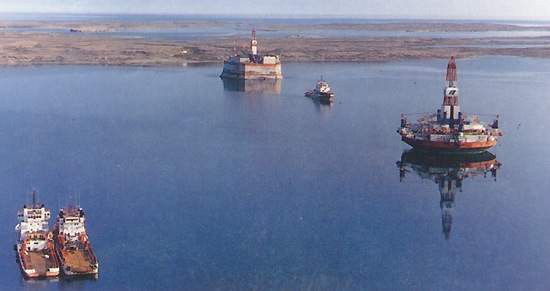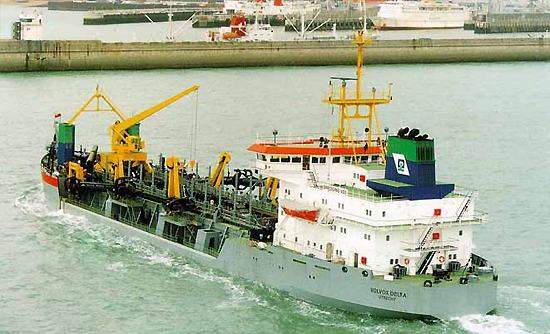Sakhalin I consists of the development of the Odoptu field (oil and gas, discovered in 1977) and the Chayvo field (mainly gas, discovered in 1979).
The large Arkutun Dagi field was initially discovered in 1989.
Sakhalin II will drain the Piltun Astokhskoye field, which is situated 16km offshore Sakhalin Island’s north-east shore, in the Sea of Okhotsk. It lies in 30m of water.
The Sea of Okhotsk is subject to dangerous storm winds, severe waves, icing of vessels, intense snowfalls and poor visibility.
The average annual extreme low ranges between -32°C and -35°C. Ice sheets up to 1.5m thick move at speeds of 1k-2k.
Offshore structures can be exposed to icing from October through to December for around 187 days.
During the ice-free period, wave heights range between 1m-3m, but can reach as high as 19m during 100-year storm conditions.
Strong north-east and south-east winds cause a great amount of sea agitation in autumn and winter.
Development infrastructure
The Piltun Astokhskoye field is developed by the Vityaz Production Complex.
This consists of the newly refitted Molikpaq, a single anchor leg mooring (SALM) 2km away and a floating storage and offloading vessel (FSO).
The Molikpaq
The Molikpaq is an ice-resistant structure, built to explore for oil in the Canadian Beaufort Sea, which had been mothballed since 1990.
With the Canadian conditions matching the operating conditions in the Sea of Okhotsk, the Sakhalin II team examined the Molikpaq in 1995, with a view to using it as a possible platform for achieving early oil economically.
The structure was towed 3,600nm from the Beaufort Sea to Daewoo Heavy Industries, at Okpo yard, in South Korea.
The redesign included major rig modifications, including elevating the drilling unit 5m to create space for the wellheads and expanding the existing eight-well drilling platform to include 32 well conductors.
The Molikpaq operates in waters deeper than its initial 15m-20m Beaufort Sea design.
The unit’s substructure therefore includes a spacer, which additionally strengthens the Molikpaq against the region’s harsh, slamming waves.
The contract was won by the Amur Shipbuilding Plant at Komsomolsk. The 14,200t spacer was broken into four 110m-long packages.
The work was completed in late 1997, ready for an August tow-out down the Amur River to Bolshoi Kamen, where the sections were welded together. The completed spacer was then towed to Okpo.
The Molikpaq was towed by Van Oord ACZ to the Astokhskoye field and 350,000t of sand were pumped into the platform’s core by the dredger Volvox Delta.
The Rocky Giant was then used to dump 27,000t of rock around the platform’s perimeter.
A 2km, 12in line links the Molikpaq to a 38m-tall, 6m-diameter single anchor leg mooring buoy (SALM). This acts as a mooring point to the Okha FSO vessel.
During the ice-free season, the FSO will remain on-site, but each December the SALM and the FSO will disconnect. The SALM will then be ballasted and laid into the dredged seabed.
Okha
The Okha double-hull tanker has 12 cargo tanks with a storage capacity of 1 million barrels (bbl) and a deadweight of 157,200t.
The tanker is equipped with a double-carcass offloading hose and can carry out tandem offloading from the stern.
The Okha also has one of the world’s largest offshore metering skids. It can meter 75,000bbl/hour from its three 25,000bbl/hour turbine meters.
The FSO Okha has dual capability as a storage facility and trading tanker. It was fabricated at Daewoo Heavy Industries in Okpo.
It is ice-classed with a reinforced bow, allowing it to push through ‘young’ or ‘light’ ice.
This allows the vessel to remain on-site without risking its ability to reach open water, thereby maximising oil production.












